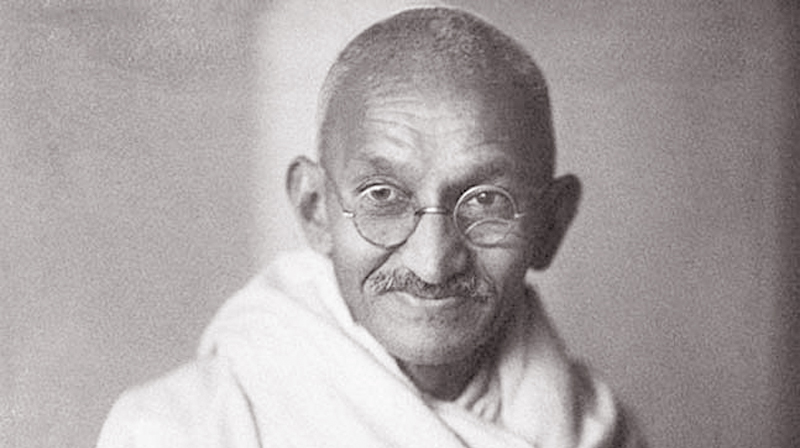A Celebrated icon on postage stamps, Mahatma Gandhi is someone nations world over turn to for inspiration.
Mahatma Gandhi’s steadfast belief in, and practice of, non-violence and peace has been a source of inspiration around the world. He is of course the father of the Indian nation, but his is a global iconic status.
Countries around the world have turned to the great apostle of ahimsa (non-violence), whether they were fighting for freedom from colonialism or seeking to establish human rights and peace. The United Nations has also declared his birthday, October 2, as the International Day of Non-Violence. Gandhi has been honoured by countries around the world on their stamps depicting diverse aspects of his life, work and philosophy, making him perhaps the personality most featured globally on postal stationery.
The first set of stamps on Mahatma Gandhi was introduced in India in 1948. Anil Dhir, in his book Famous Stamps—The Romance of Rarities—writes about the stamp issue right from the concept; in 1947, of having a set of stamps on Gandhi to be released to commemorate his 80th birthday which would have fallen on October 2, 1949. However, the great leader was assassinated on January 30, 1948, and the set of stamps was released on August 15, 1948, marking India’s first anniversary of Independence.
The stamps were printed in Switzerland rather than India. Some of the stamps were then ‘Service’ overprinted back in India for Indian Governor-General C. Rajagopalachari’s official correspondence. Then, in 1969, the birth centenary of Gandhi was commemorated in India by issuing four stamps. Gandhi and his wife Kasturba, affectionately addressed as Bapu and Ba, were shown on the ‘Ba-Bapu’ stamp.
South Africa was crucial to Gandhi’s satyagraha (insistence on truth), and in 1995, a joint stamp issue of India and South Africa was released. The stamps show the young lawyer Mohandas Karamchand Gandhi and the elderly Mahatma. The illustrations on the miniature sheet show Gandhi spinning the charkha and at Dandi, as also his belongings such as a timepiece, spectacles, and slippers that portray his frugality and simplicity. The ‘Centenary of Satyagraha’ also saw the India Post introducing four stamps in 2007 depicting events from Gandhi’s life in South Africa.
As the leading light of the freedom struggle in India, Gandhi served as the Indian National Congress President in 1924. He is shown on the stamps released by India in 1985 marking the party’s centenary. The other noteworthy stamps have been themed on Salt Satyagraha, Dandi March, and the Quit India Movement. A celebrated stamp was released in the millennium’s first year based on Gandhi’s caricature by a well-known cartoonist that also bears semblance to the outline map of India. ‘Mahatma Gandhi, Man of the Millennium’ was the theme of the stamps issued the next year.
The charkha, as the symbol of non-violence, is a leitmotif on the stamps on Gandhi, and in 2011, the India Post released the world’s first khadi stamp. The unique diamond-shaped Z100-denomination stamp shows Gandhi’s face in profile and the charkha on khadi cloth with his words, ‘Be true’.
Besides stamps, Gandhi has been featured on the India Post’s prepaid postal stationery such as inland letter cards, postcards, and envelopes. There are also permanent cancellations issued from post offices in Gujarat, showing the Alfred High School where Gandhi received his education, his ancestral home, and the Kocharab Satyagraha Ashram.
A unique special cover with a hologram showing Gandhi was also introduced by the South India Philatelists’ Association, with the Postal Department’s approval. Globally, stamps and postal stationery on Gandhi have been released by more than 90 countries. The United States of America, Mauritius, Fiji, Switzerland, Guyana, Poland, Bhutan, Myanmar, Mexico, Iran, Ireland, and the former Union of Soviet Socialist Republics are only some of the countries. Britain, despite having the tradition of not issuing a stamp on a non-British personality, issued a Gandhi stamp in 1969.
The United Nations too, issued a stamp on Gandhi in 2009 designed by Miami-based artist Dr. Ferdie Pacheco.
Pacheco said that the colours in the stamp depict what Gandhi epitomised: “I chose these colours: red because it is the colour of energy; his energy, even when he was fasting; green the colour of healing, white of purity, blue of serenity, yellow of balance, and brown of the Earth as he helped people. All these colours represent a peaceful man who helped the world.”
N. Kalyani



Add new comment